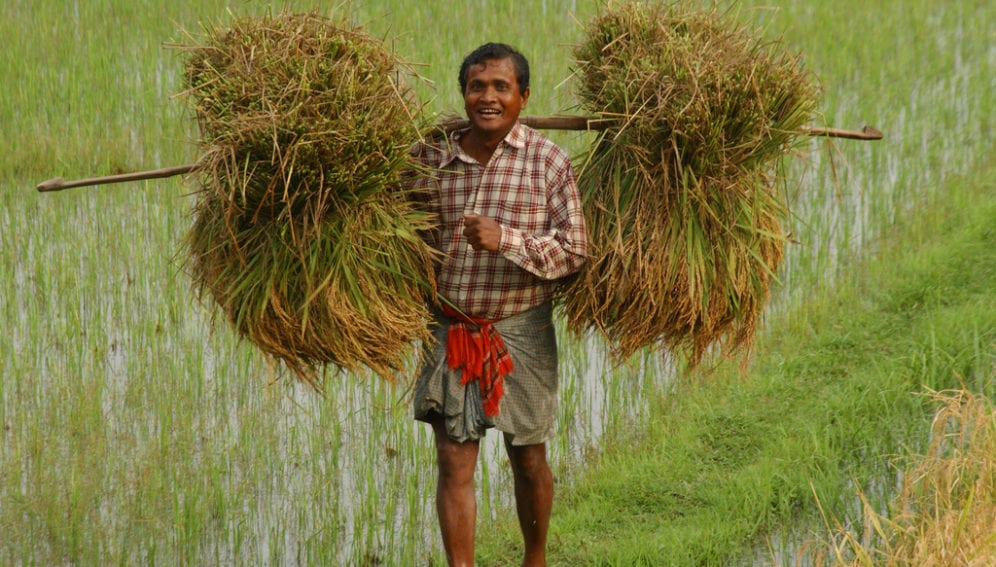By: Smriti Daniel
Send to a friend
The details you provide on this page will not be used to send unsolicited email, and will not be sold to a 3rd party. See privacy policy.
[COLOMBO] A 12-nation study has found Bangladeshi and Sri Lankan rice samples having the highest levels of cadmium, a toxic heavy metal.
Parts of Cambodia, France, Ghana, India, Italy, Japan, Nepal, Spain, Thailand and the US were also covered by the survey, the results of which were published online in Environmental Science and Technology on 13 May.
In Bangladesh, where samples were taken from 12 of the country’s 64 districts, the study represented the first, large-scale survey of cadmium contamination of rice.
Sri Lankan samples showed lower cadmium levels, but the metal is already suspected to be one of the causes of chronic kidney disease of uncertain aetiology (CKDu), responsible for the deaths of many farmers in this country.
"Cadmium from rice represents a considerable health concern, and it is most urgent to address it in countries with high rice consumption," says Andrew A. Meharg, chair of plant and soil science, Queen's University, Belfast, and lead author of the published paper.
While the limit for cadmium in rice set by the Codex Alimentarius Commission of the WHO and FAO is 200 micrograms per kilogram, samples taken from Bangladesh and Sri Lanka exceeded 1,000 micrograms of cadmium per kilogram of rice.
At 500 grams of rice consumption per day, Bangladesh is one of the highest per capita rice consumers globally and therefore, most likely to be at risk of cadmium exposure, the paper said.
In Sri Lanka, samples were taken mostly from the North Central province where CKDu is rampant, Mangala C. S. De Silva, senior lecturer in environmental toxicology at the University of Ruhuna, and one of the authors of the paper, told SciDev.Net.
Further testing for arsenic content in the Sri Lankan samples is currently underway. "We hypothesised that these elements may act as causative factors (for CKDu) as they are both nephrotoxic," said De Silva.
"The synergistic effect of these toxins seems to cause the disease," says Channa Jayasumana, a lecturer at the department of pharmacology, faculty of medicine, Rajarata University.
Cadmium content in rice grains depends on a variety of factors such as growing conditions, irrigation practices and factors such as whether the rice is polished or not.
People in affected countries need to consider diversifying their diets to reduce cadmium intake, says Meharg.
Parts of Cambodia, France, Ghana, India, Italy, Japan, Nepal, Spain, Thailand and the US were also covered by the survey, the results of which were published online in Environmental Science and Technology on 13 May.
In Bangladesh, where samples were taken from 12 of the country’s 64 districts, the study represented the first, large-scale survey of cadmium contamination of rice.
Sri Lankan samples showed lower cadmium levels, but the metal is already suspected to be one of the causes of chronic kidney disease of uncertain aetiology (CKDu), responsible for the deaths of many farmers in this country.
"Cadmium from rice represents a considerable health concern, and it is most urgent to address it in countries with high rice consumption," says Andrew A. Meharg, chair of plant and soil science, Queen's University, Belfast, and lead author of the published paper.
While the limit for cadmium in rice set by the Codex Alimentarius Commission of the WHO and FAO is 200 micrograms per kilogram, samples taken from Bangladesh and Sri Lanka exceeded 1,000 micrograms of cadmium per kilogram of rice.
At 500 grams of rice consumption per day, Bangladesh is one of the highest per capita rice consumers globally and therefore, most likely to be at risk of cadmium exposure, the paper said.
In Sri Lanka, samples were taken mostly from the North Central province where CKDu is rampant, Mangala C. S. De Silva, senior lecturer in environmental toxicology at the University of Ruhuna, and one of the authors of the paper, told SciDev.Net.
Further testing for arsenic content in the Sri Lankan samples is currently underway. "We hypothesised that these elements may act as causative factors (for CKDu) as they are both nephrotoxic," said De Silva.
"The synergistic effect of these toxins seems to cause the disease," says Channa Jayasumana, a lecturer at the department of pharmacology, faculty of medicine, Rajarata University.
Cadmium content in rice grains depends on a variety of factors such as growing conditions, irrigation practices and factors such as whether the rice is polished or not.
People in affected countries need to consider diversifying their diets to reduce cadmium intake, says Meharg.














